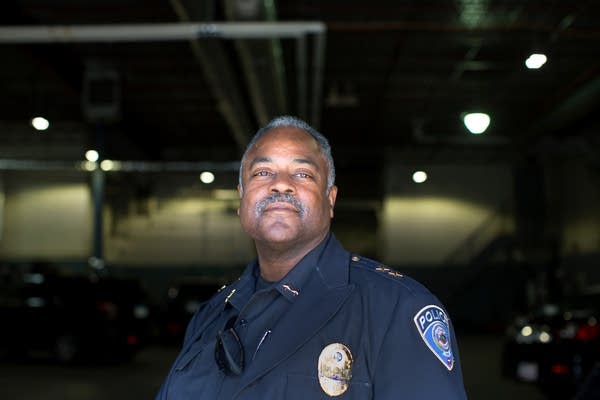Metro Transit cop numbers jump as rail, bus lines expand

Go Deeper.
Create an account or log in to save stories.
Like this?
Thanks for liking this story! We have added it to a list of your favorite stories.
Metro Transit had 100 full- and part-time police officers and many questions about their effectiveness when John Harrington took over in 2012.
An internal report had criticized the department and challenged its professionalism and mission. Harrington, an ex-state senator who'd been chief of the St. Paul police, set out to transform the organization. One of the first steps: a massive hiring effort.

Today, it's one of the fastest growing police departments in Minnesota. Harrington has more than doubled the number of officers, making it the state's seventh largest police force. He wants to add nearly 100 more officers over the next five years. A new $16 million headquarters building, paid for largely through federal funds, is in the works.
Harrington has the support of the Metropolitan Council, which funds the cops. Some, though, question the fast growth in the force which handles relatively few serious crimes compared to city police. Transit officers focus largely on panhandling and other low-level crime that can make riding the bus uncomfortable for other passengers.
Turn Up Your Support
MPR News helps you turn down the noise and build shared understanding. Turn up your support for this public resource and keep trusted journalism accessible to all.
Harrington, however, sees the force as vital to the growing Metro Transit system, especially in downtown stations and stops.
"When I got here, we had a couple of officers that worked in downtown St. Paul and a couple of officers who worked in downtown Minneapolis and a couple out at the Mall of America," he said. "What we recognized was that a couple of officers only gave us a very thin police presence in some really important corners of our cities."

Harrington says the bigger force is more effective, but it's also straining the capacity of the department's current headquarters on Minnehaha Avenue in Minneapolis.

During a recent tour, he made the case for a new building: Investigators who need to interrogate a suspect sometimes have to wait for a meeting to clear out so they can use the only conference room. Roll call is held in the lunch room, which also houses some of the terminals where officers write their police reports. The women's locker room is stuffed into what used to be a closet.
The new headquarters, with nearly twice the current space, is set to open in 2017 near some existing Metro Transit buildings just north of Target Field. The federal government is expected to contribute about $10 million.
The operation, though, deserves more scrutiny, said Annette Meeks, who oversaw Metro Transit for eight years when she served on the Metropolitan Council under Republican Gov. Tim Pawlenty.
She likens the department's recent growth to the invasive plant kudzu, which infested her lawn when she lived in the south. "You turn your back for a little bit, and suddenly you're overwrought with a giant state agency that you didn't see and you didn't know was even there."

Meeks notes there are relatively few serious crimes reported annually on the transit system — 500 to 600 in recent years, compared to the 23,000 handled by the Minneapolis Police Department. And she questions whether Metro Transit needs such a large independent police force.
Minneapolis has park police, Metro Transit police, the city force and the Hennepin County Sheriff's Office, she noted. "You have to start to wonder, how many police vehicles do we need? How many different police forces do we need? Maybe at some time it would be wise to talk about consolidation."


